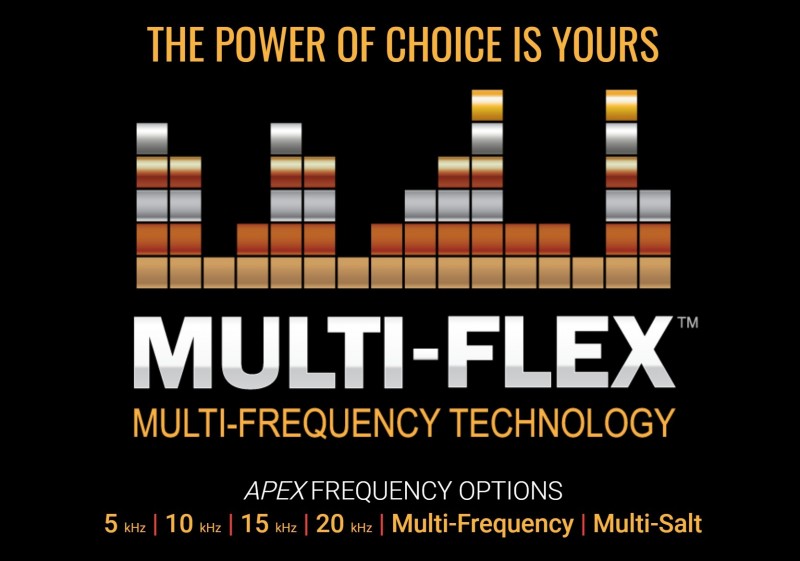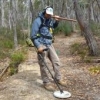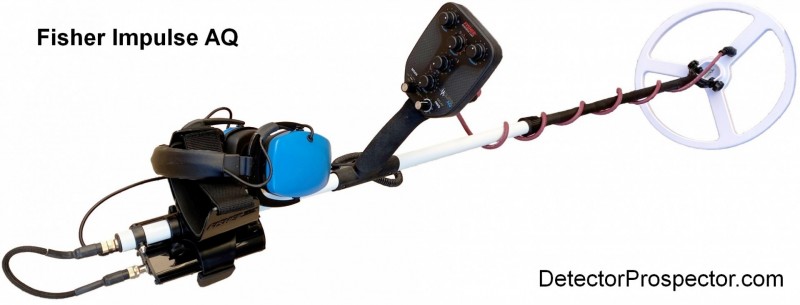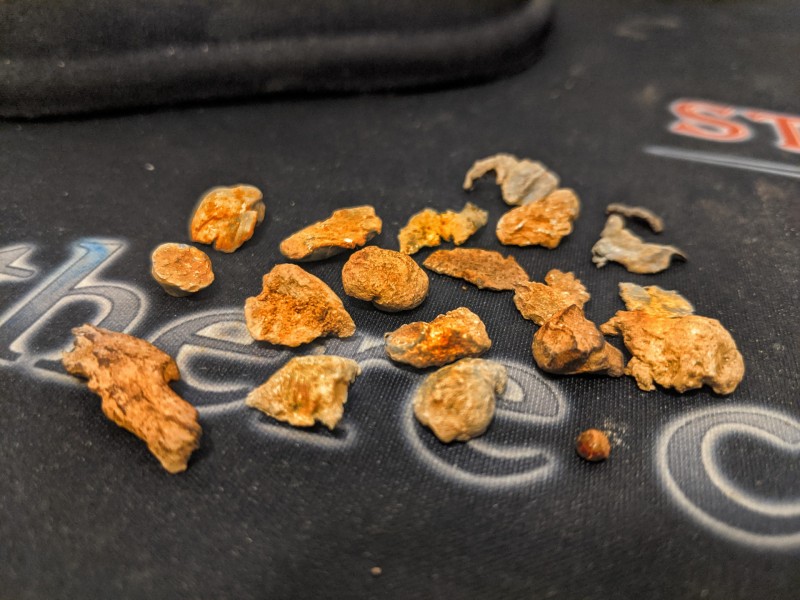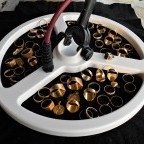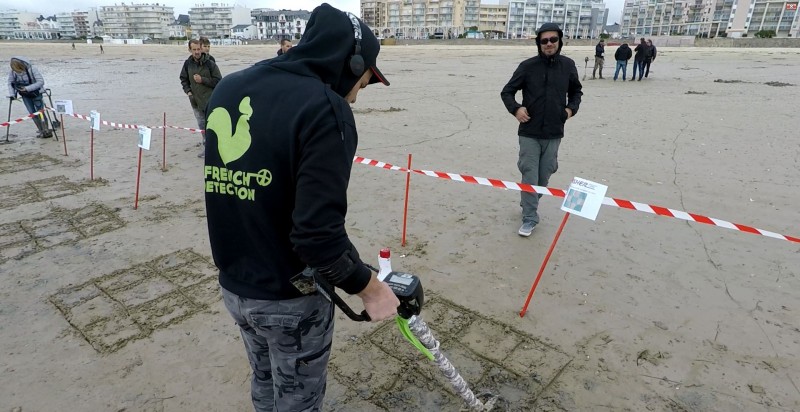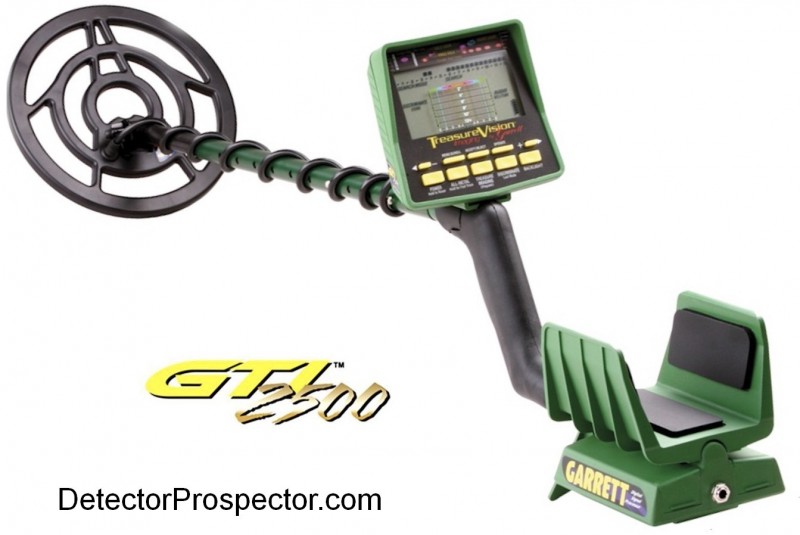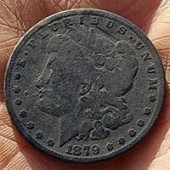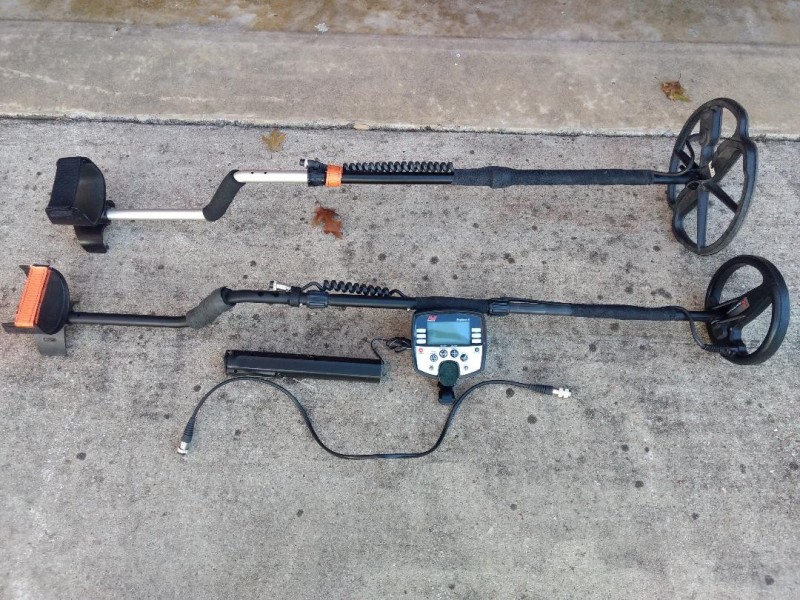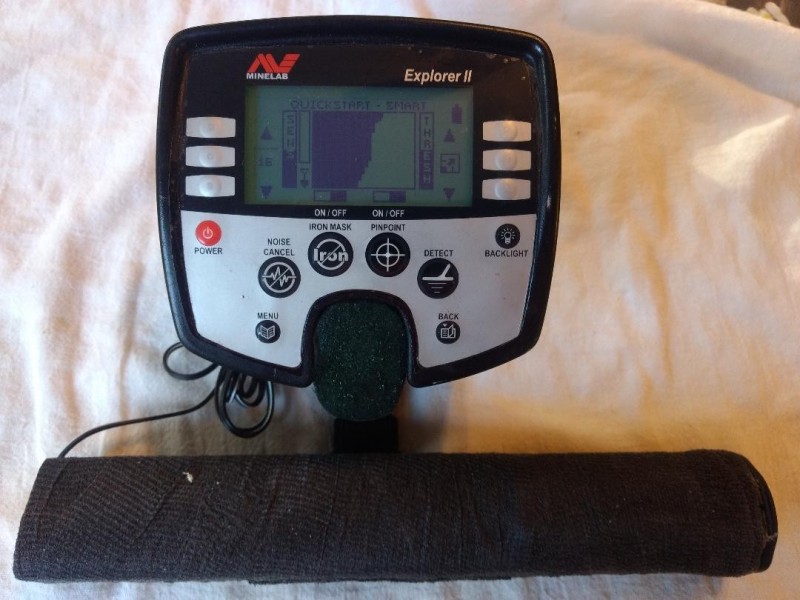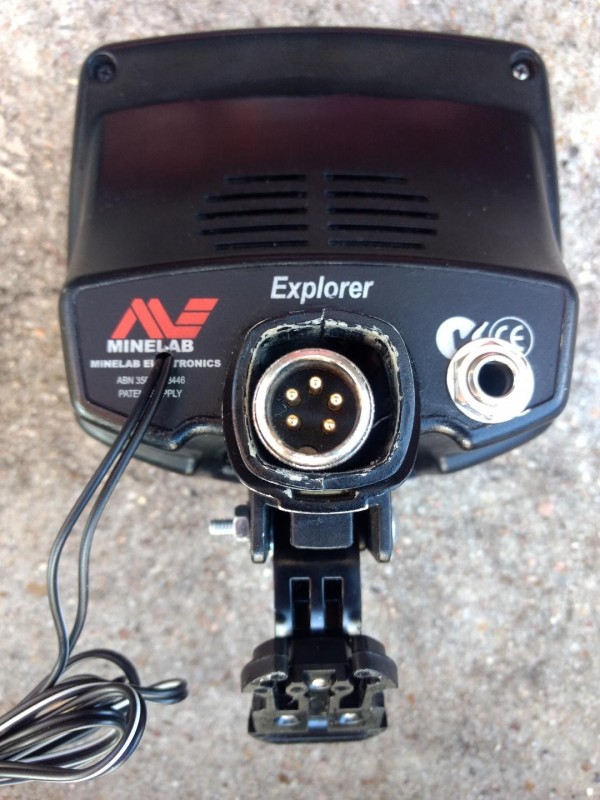Search the Community
Showing results for tags 'detector tech'.
-
Hello all, I was reading Steve's post on "Best detector values under $500 dollars"! And noticed something! I noticed that MineLab is the only manufacturer that listed the operation temperature, and storage temperature of their equipment! Being a Native of South Florida with its oppressive heat, humidity, and salt air, most of the year! I have experienced first hand what happens to electronics, plastics, adhesives, etc... that many of you in certain States, and Country's, have also experienced! Suffice it to say to the uninitiated, that it is a bad idea to leave these items in an enclosed vehicle for an extended period of time!♨️ The last couple of weeks, i have been trying to figure out if coil or detector color, can adversely affect function and longevity, in these types of conditions! (not just inside vehicles)! Proof has been hard to find, without the advantages that the designers, and bench testers, have at their disposal! I know "most" electronics have overload protection built in; from energy spikes , as well as heat! That would be an obvious "failure"! But short of this "failure", will detection depth, or circuit function be appreciably reduced based solely on the surface, and internal temps of the parts themselves? Especially the copper windings of the coil! Are PI detectors more likely to suffer, due to the added power output? And is this a cumulative, or situational effect that goes unnoticed? ( loss of depth with hot coil, or circuit function)! Just wanted to get that out there for any input you all have!! Based on the huge knowledge base on this forum!👍👍
-
I am somewhat new to metal detecting and was recently told, by a veteran detector, that all machines are multi frequency. I was also told to not buy into the multi frequency hype and that machines advertised as ones, is a marketing ploy. Please help! Is he right?
-
Is this detector able to detect diamond? I am trying to find a diamond from a ring that fell out a number of years ago in my garden. My friend Aberal Molzesman said in his blog tha it is possible.
-
I am new here so there may be a better forum to ask this question so redirect me if needed. I have a Teknetics Delta 4000. I need to probe a fiberglass tube 2 inches in diameter to see if I can detect a copper beryllium strip which should be inside. Unfortunate I cannot get closer than 16 ft to the tube. I have found a 25 foot 5 pin DIN cable that would extend the cable that is on the 4000. I could then detach the pickup coil and mount that on a 16 ft PVC rod leaving the electronics and readout with me. I only need to know if there is something there or not there. The rod is 100 ft off the ground and 16 ft out from my closest reach. Anyone ever tried to extend the cable?. I know it is not a perfect situation but I would save me a lot of money if I can detect the metal strip. Regards Mike
-
How good is this for our hobby? From looking at new members each day here and other forums seems to be a lot of newbies. They have a bunch of great choices that won't break your bank account. They can pick from the Garrett Ace line, AT Pro, Nox 600 & 800, Simplex+, Vanquish series, the new Garret Apex and maybe several new detectors from Minelab next year. Maybe some old times can tell us if there was a similar period of great detectors to pick from.
-
What machine that you were able to use at a certain time gave you an advantage over others at certain places you hunt.The first for me was having a minelab explorer in Jan of 2000 for hunting coins in parks. Even being too selective when I first started hunting with it I still cleaned up because the machine was that good. The problem was there were many good explorer users in my area which made it much harder to find coins like we did in the past with such ease.The Nox is a great machine but it was not available in( 2000- 2007 ) when the explorer ruled the parks.That machine and that time will always be special to me.Mike Moutray who was one of the best explorer users I saw would go around the country and would hunt places people on the forums would take him to.My friend got in touch with him and he would hunt a old racing track with us . 6 explorer users in all.He made the most finds out of all of us.He was that good.Yet he hunted 3/4 of a 200 year old oak tree and went to the bathroom. When he came back he did not go back to finish the tree. I went to the tree and got a iffy deep hit and dug,putting the dirt in a gold pan.Out came a 1909 2 1/2 $ gold coin.I then put the Sunray probe in the hole and got a pulltab hit.Out pops a other 1909 2 1/2 $ gold coin.Put the probe in the hole and again a pulltab hit. This time a fired 22 slug.The song says 2 out of 3 aint bad.The explorer was way ahead of its time.
-
Okay all you propeller heads...... When it comes to PI detector power, it’s Amps that matter first.....correct ? Minelab PI’s: Operate around the 7.2v but draw close to an Amp White’s TDI: Operate at 12v to 16v but draw about half an Amp So voltage is “electrical pressure” but Amperage is “the rate of electrical flow”....... What controls the Amps........just the MOSFET Steve......didn’t know where to post this question so feel free to move as needed. Thanks Tony
-
Hi All I've been hearing rumours of a new gold machine in the works ? Is there any truth in this and if so what are some of the rumours or truths about it. Cheers
-
Hey guys n girls I have a doozie of a question for anyone that may be in the know. I'm not sure how to ask this without being negative towards a great detector Minelabs GPZ7000 approx $9000 Australian dollars. I was watching some YouTube videos on the Ajax Segma 3d metal detector. It has an 8m depth. Finds all types of metals, water even under ground caves. The cost is A lot less than a GPZ7000 My main question is why have we not seen or heard more about this in Australia. I mean if not for general gold detecting, but for bigger companies using it to find the depth of the gold they need to mine. Check out the detector by Ajax and I think the other one is a company called Ger from Germany.
-
Just curious, how many prospectors are still swinging around a Minelab SD series, GP or even GPX4000?? These models hardly get a mention these days. For those that are swinging these older models, here's a few additional questions do get a bit of chatter happening....maybe Have you tried any of the new flat/spiral wound coils? Have you tried modern boosters, or aftermarket battery options? On a personal note, I still have a SD2100e and a GP3500 but they don't get any serious use. The 2100 is very sentimental model to me as it was the detector I found my first nugget with. The GP3500 was my baby, where Minelab added everything I wished for. It still has the best audio in any prospecting detector I've used to date (admittedly she's a bit on the quiet side).
-
I’ll post link here. Folks can comment if they wish. Saves me time by not posting in detail on all forums. I like this forum very much. Hope I am not breaking rules here or am not upsetting anyone. http://www.dankowskidetectors.com/discussions/read.php?2,173272
-
http://www.dankowskidetectors.com/discussions/read.php?2,172859
-
Hello Guys, I'm new on this forum and like Alexandre Tartar, I live in north of France. I was a young prospector in the 90's and asked my father (electronic engineer with good knowledge in magnetic field theory) to build a PI to hunt the beaches. So we have made, in a few months, an home-made PI metal detector 25 years ago, based on the technology of the old White's Surfmaster PI (mono coil). I remember the use of FETs (Field Effects Transistors to make 200 volts pulses). It worked, but unfortunately, my father was afraid by a so powerful magnetic fields and has continued his research on VLF detectors, until today ! After this short presentation, here's my question : Is the Impulse AQ a bipolar detector ? Le Jag has explained us on the french forum "detecteur.net" this technology developped by Alexandre : Positive and Negative pulse are alternatively sent. The positive one light the gold ring but magnetize the soil. The negative one demagnetize the soil. What about it ?
-
Show simple targets you swore were gold. These were 12" inches plus in depth (all lead)....... Found with a borrowed GPX 4500
-
HOW MAKE A SERIOUS COMPARATIVE TESTS PROCEDURE First rule Blind tests are mandatory to be serious. Second rule if you do not agree refer to rule number 1 😊 The purpose of this playground, and not to take into account the feeling of the prospector. It is too easy for a participant to indicate that he is correctly detecting the target. But in general he does not detect it or he thinks to detect it. It often detects a ground effect. During our long experience and our meetings with prospectors at the beach, we realized that the prospector was often influenced by the pride placed in his detector. This is why we have implemented this drastic and non-falsifiable comparative tests procedure. Of course for this test you have to be 2 people. A person who hides targets and a person who tries to find them. The depth tests can be done simultaneously. It is obvious that here are static tests. The reality is even more difficult! See for yourself the catastrophic results .... Document here : ******************************* https://www.casimages.com/f/qyqU0eUlCSb ******************************* COMPARATIVE TESTS PROCEDURE.pdf
-
A few afternoons back I went out to a local beach to do my normal searching. It has been a time of few waves and even fewer targets. Everyone hears this from me quite often but I've heard it from other detectorists as well. So, you relax, go slow and just enjoy the beach. A bit down from me I saw a group along the blanket line and there was something different. There was a little kid (older than mine) about 5 or so swinging a metal detector. It had a kinda orange coil and the kid just was playing with it a bit and then running around with the other kids. I decided to go up with my 800 in hand and have a little chat with him and maybe 'show' him how to find things. By the time I got up to where he was he was out near the water and the only one still around was his dad and his dad's friend or brother. We started up a bit of a chat and they said they had bought the detector off of Amazon for $60. I didn't recognize it but it was giving my 800 an EMI fit so I went to a different channel. I told them what I had in mind (quarter in hand) and they called the little boy over. I wish I had taken a picture of the detector but it was a short arm, adjustable with compression fittings, concentric coil detector of a brand I didn't catch. It had a screen that was discriminating and it did 'find' the planted quarter which the kid liked but didn't have that much interest in it. One of the really interesting parts of the story was the friend. He told me it was an Amazon purchase and thought that $60 should make it a very good detector. They didn't really have a clue. They asked me about mine and I told them and I could see their jaws drop a bit on now knowing that 'pros' like me were out with detectors from $500 to $900! It was way out side of their conception so they asked me what did I think of their detector. I didn't really pick it up but I told them there are these new little detectors that could be better than a lot of the detectors just 5 to 8 years old that sold for much, much higher prices. This is part of the new purchaser and market for the detector companies which provide higher end products like Minelab. It is a new reality of buyer and probably the reason for their low end detectors. When I came back and searched Amazon looking for this $60 detector I was flooded with many, many detectors from companies unknown. Minelab is not on Amazon it seems and many other searches for the average buyer. Some of you here see some advertising on this forum for the best metal detectors. I started a thread about it a couple of weeks back. One thing I did happen across when looking for the metal detectors were a few 'board detectors.' These were complete metal detectors on a circuit board that sell for less than $5.00! It becomes more clear that these detector circuit boards placed in a molded plastic handle become the brains for a $50.00 detector that wholesales for maybe $26. Components are cheap. Marketing and R&D are expensive! I didn't find much on the beach that day but I brightened the face of a little kid and I got a good story.
-
The GB knob on my Tejon is super loose now after the tons of hours I put on it and I get a little waver in the threshold. Trying to find who sells damping grease in really small quantities as the stuff is horribly expensive. Mcmaster has some at $111 + shipping, Amazon has some in the $30 range and all more expensive than the potentiometer itself. I could replace it but rather not start soldering in parts if I don't have to.
-
Hey everyone, Just curious, has anyone tried lowering the tone break T1 to negative numbers or all the way down to -9 on your hunts? Is it worth it, did anything good come out? Or is it just a recipe for headache? Reason being, I was playing yesterday with the coil and found an old button that is clearly non-ferrous, but gives negative TID in multi-frequency and positive/negative on some single freqs. Thank you
-
The art of detection shares common issues whether it be audio, optical, rf or electromagnetic. Some of the common issues are: A: Sensitivity B. Noise C. False signals and also the problems that filtering or mixing creates in trying to solve the above issues. A radar detector faces many of the same problems as a metal detector, and has up until this point in time used similar techniques to provide solutions. A radar detector manufacturer named Radenso has now applied AI to solving these issues. And some of their methodology could have applications in metal detecting. They are taking signal samples to identify good and bad targets and feeding them to a Super Computer, that then creates a signature which is programmed into the radar detector. So the super computer does the heavy lifting creating a library, and allowing the processor in the detector to simply do a lookup from a library. Some terms for those not familiar to aid in watching the videos: CW = continuous wave similar to a signal from a VLF metal detector BSM = Blind Spot Monitor are radar based collision and lane change units which emit radar and drive radar detector users crazy(think bottlecaps). Door Openers = Equal microwave(radar) motion detectors to open the automatic doors at retail stores etc https://www.vortexradar.com/2019/11/radenso-introduces-artificial-intelligence-in-radar-detectors/
-
I am looking for some objective non-partisan opinions on what detectors are in use right now. I am seriously not interested in people promoting their favorite brand but just hoping for some honest observations. At your club what are the most prevalent brands and models you are seeing? Same thing at the hunts. What are the top two or three models you are seeing? My last couple trips to the UK it was simple. Now these are groups comprised not of locals, but visitors from the U.S. I’d say 95% were swinging either a XP Deus or Minelab Equinox, plus a few CTX 3030. That seriously was about it. In my circle of the serious prospectors I know it’s pretty much a Minelab PI/GPZ world. For VLF prospecting units lots of Gold Bugs, Gold Monsters, and White’s Goldmasters/MXTs. Garrett AT Golds are pretty rare. But what about general coin and relic across the U.S.? Not the serious forum types but the folks at the clubs and hunts. I’m guessing some regional preferences, and I’d have to guess Garrett is still big with many club type hunters going by YouTube activity. But I honestly don’t know what the masses are using and thought you all might enlighten me on that? This is really nothing other then pure curiosity on my part. Thanks in advance for any comments.
-
Well it’s official. The Garrett GTI 2500, the flagship of the Garrett metal detector lineup, was over 20 years old in 2019. The GTI 2500 was introduced in 1999. Twenty years is an awfully long time in technology land, and I’d say it’s well past time for Garrett to do something about that. What would you like to see from Garrett in 2020? Garrett GTI 2500 Data & Specifications
-
Will 2020 be the year of the cliche product? Will we see products capitalizing on the 'better vision' theme? Have you already seen them? haha 😋 What marketing slogan would you use for a new detector, coil, pointer, pick, pan, 4x4, etc., etc. ??? Here are a couple that come to mind ... White's Detectors ... clearly Better in 2020! Everyone will have 2020 nugget vision with the new Minelab ... New in 2020, glasses for your detector ... get our clear boost signal enhancer.
-
Since I'm down and out with a broken ankle for a few weeks and have plenty of time on my hands. I decided to do a EX2 chest mount mod that I saw on You-Tube by IDX Monster, thank you sir for paving the way!! I have a bum shoulder that needs to be rebuilt next year, I needed to adapt my machine to extend my hunting time until then. I used a Teknetics S-rod for the stock 11" coil and a White's MX5 S-rod for the 8" coil. I'll be using a Go-Pro chesty to mount the control head and I bought a 3' extension cable to connect the control to the coil. I cut the battery housing from the handle, but, I have a more compact and lighter battery pack on the way. I ordered a 1/4" stereo headphone jack from Amazon and will run my phone cord under my shirt to keep it from getting in the way. This set-up is as light as feather to swing and I can't wait to heal up and take it on it's maiden voyage.
-
Book Excerpt: 14/ Modulation Modulated audio acts to reduce noise and response irregularity in a high gain audio platform. That’s a lot to manage. Modulation defines each tone and makes all signals sound better and more the same. This also represents an artificial, distorting influence--a kind of audio “no-man’s-land”where small objects sound bigger and large targets are “clipped down.” This is especially true in the “tone ID” modes. For the operator, modulation makes it harder to tell a deep faint response from a small surface one. In conjunction with Gain, modulation makes small responses more distracting--sounding fuller and more solid. Modulation also makes tiny mineral, seabed or black sand variations jump way up to sound more like good signals. Determining a response’s shape and distance from the coil are also harder. What you have is a digital representation of ground and targets--more of a measure of the relative differences between the two than an actual metal object reading. Another consequence of this is that big targets sound smaller--cans--sunglasses--all are modulated to often sound like they are (more) coin or jewelry-sized. I’ve had some particularly frustrating deep-water hunts with the Equinox giving tantalizing small indications on what turned out to be super-deep “rotten glasses.” This operating characteristic can be confusing for new hunters. This, in particular is an Equinox operating characteristic that is easier to make sense of and manage with some solid, basic instruction. For anyone--the “trade-offs” that derive from the Equinox’s heavily modulated signal are its most frustrating feature. 1/ The first, most basic method of managing a heavily modulated signal is to turn the volume down. Even going to “24” or “23” makes a huge difference. This makes for more audio distinction between weak and strong signals. Many CTX hunters discovered this after becoming frustrated with that detector’s tendency to bring up tiny conductors. With its high frequency weighting on several of the pre-set modes this is more so of the Equinox. While many of the underwater headphones that are available are quiet to begin with and don’t allow much of a margin for reduced volume--the stock 800 series wireless set do. 2/ Focus upon the more solid signals. This is a critical Equinox skill in any context. Even as a pulse hunter who has experience with fast Delay machines that hit running shoe eyelets loud and clear--the Equinox was initially exasperating to use for me because of these modulation-boosted targets. While I see some patient hunters getting good results “micro gold” hunting this is at highly specific types of locations. The solution is simple basics. Rather than digging endless tiny part-responses--use Pinpoint to check for solidity--and do a quick angled pass to see the consistency. (See “Pinpoint” below). With practice these small conductors will become more obvious in Discriminate as well. This is the way to offset the distortion of a modulated signal--but still get its benefits. This is where the above mentioned “correlation” comes in--looking for “sets” of target characteristics to double check what the audio is telling you. Even when examining tiny “earring-sized” sounds it’s possible to screen for solid targets and use this as a basis for gathering a full target profile. Each signal feature (size, strength, solidity, position in strata…) should confirm the others. The depth meter is also a good tool for offsetting the distortion of modulated audio. Signal depth and signal strength should be “in keeping.” (More on this type of method below). Modulation is more active in the Tone (break) ID modes (especially “5 Tone)” so using the more fluid “50 Tone” or just “Pinpoint” are good ways to compensate. One reason that many hunters have trouble adjusting to the Equinox is that again, this high Gain / high frequency / modulation combination reduces your ability to judge how far from the coil something is. This in turn throws off your sizing. The number of hunters I see on “YouTube” videos trying to ignore these simple target testing basics is laughable--with many trying to pass off this as some cool “dig everything” ethos. Again--not “everything” is “anything” and a machine like the Equinox will tell you when not to dig sometimes--loud and clear. From "Skill Building with the Minelab Equinox Series Metal Detectors" by Clive James Clynick (2019)


